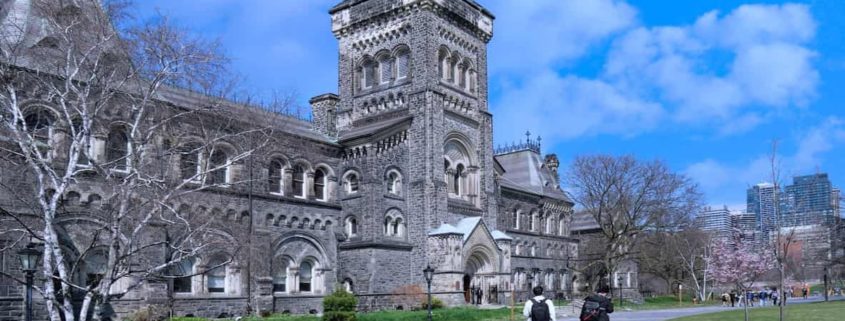5 issues worldwide college students have to learn about Canada’s Immigration Ranges Plan 2025-27…
On October 24, Canada introduced the Immigration Ranges Plan for 2025-2027 and, for the primary time, set targets for short-term residents, which incorporates worldwide college students.
Every year, Canada publicizes its Immigration Ranges Plan for the 12 months forward to stipulate the variety of everlasting residents it goals to confess into the nation to help financial progress, reunite households, and fulfill humanitarian commitments.
Uncover your choices to check in Canada
The Immigration Ranges Plan additionally launched immigration targets for 2026 and 2027, though these are notional, with Immigration, Refugees, and Citizenship Canada (IRCC) finalizing the upcoming 12 months’s targets by November 1 annually.
Listed below are some takeaways from the newest announcement that worldwide college students have to know:
Canada plans to welcome extra new worldwide college students than work allow holders
This 12 months’s Plan units a steady goal of 305,900 worldwide scholar arrivals yearly for 2025, 2026, and 2027.
These figures are for brand spanking new arrivals solely, so don’t embrace anticipated examine allow renewals from college students already in Canada.
In distinction, the variety of short-term resident employee arrivals – which incorporates these from the Worldwide Mobility Program and Short-term International Employee Program – slowly declines over the course of three years (367,750 in 2025; to 210,700 in 2026; to 237,700 in 2027).
Because of this from 2026 and 2027, a much bigger proportion of short-term resident arrivals in Canada might be worldwide college students.
Canada plans to welcome extra new PRs from inside Canada
The Immigration Ranges Plan 20255-2027 emphasizes facilitating the transition for these already within the nation – both as college students or employees – to everlasting residents beneath the “in-Canada focus” class.
In 2025, IRCC anticipates greater than 40% of total everlasting resident admissions to be college students or employees already within the nation.
In response to the Plan, the Federal Excessive Expert (FHS) section has been cut up into Federal Financial Priorities and In-Canada Focus, with the latter allotted extra admissions over the subsequent three years.
For instance, in 2025, the goal for Federal Financial Priorities is 41,700 whereas the goal for In-Canada Focus is 82,980 – almost double.
That signifies that IRCC would possibly search for extra methods to transition short-term residents within the nation into everlasting residents.
This might occur by way of extra Canadian Expertise Class (CEC) Specific Entry attracts, or new insurance policies that favour these already within the nation.
Provincial Nominee Applications (PNPs) to be scaled again
The Plan additionally introduced some drastic cuts to the targets for PNP admissions within the upcoming years.
In 2025, the federal government’s allocation for PNP admissions is simply 55,000 – an enormous reduce from final 12 months’s goal of 110,000 for 2024, and 120,000 for 2025.
College students who had deliberate on pursuing provincial nominations as a pathway to everlasting residence could discover the PNP streams extra aggressive.
Better deal with French language expertise
In step with IRCC’s earlier stance on francophone immigration, the Ranges Plan focuses on together with greater proportions of French-speaking everlasting resident targets exterior of Quebec.
In 2025, eight.5% of the general deliberate everlasting resident admissions might be French talking (exterior Quebec). This will increase to 9.5% in 2026 and 10% in 2027.
That is additionally a rise in comparison with earlier targets talked about within the 2024-26 plan which checked out 7% for 2025 and eight% for 2026.
College students with little or no fluency in French could want to be taught French to enhance their possibilities of being invited to use for PR.
Better significance for in-demand occupations
In 2023, Canada launched category-based choice attracts to situation ITAs to expert employees in high-demand sectors, comparable to healthcare, STEM, trades, and transport. This aimed to deal with Canada’s labour shortages.
These classes are designed to vary with time, relying on labour market and demographic wants.
In 2025, precedence classes embrace: healthcare occupations, and commerce occupations.
The federal government has not talked about plans to retire any of the opposite precedence classes comparable to STEM, transport, agriculture or agri-food.
To be eligible for a category-based choice draw, candidates will need to have accrued at the very least six months of full-time, steady work expertise (or an equal quantity of part-time work expertise) inside the final three years in an in-demand occupation.
College students who’re anticipating to graduate with Put up Graduate Work Permits (PGWPs) and want to pursue Canadian PR after could take into account specializing in jobs that align with the category-based attracts.
Uncover your choices to check in Canada




Leave a Reply
Want to join the discussion?Feel free to contribute!